Paltry Poultry at the ‘Port: Immigration records in the Tasmanian Names Index

You can now find out more personal details about immigrants to Tasmania in the early 20th century, and the Tasmanian residents who nominated them.
What follows is a tale of disappointment, confusion indignation and despair.
A series of letters to and from the Immigration Office between 1920 to 1943 (SWD15) has now been added to the Tasmanian Names Index. It contains 1782 names. We have also added:
- Nomination forms (SWD15, 720 names from 1912-1924)
- Returns of immigrants (SWD14, 1035 names from 1924-1935)
Government records rarely tell success stories. No doubt some of these immigrants were reunited with family, and established happy lives in Tasmania. Others had great expectations, but were sadly disappointed.
Agnes Parker and Mary Hicks-Doherty travelled to Tasmania in 1921. Their plan was to try their hand at dairy and poultry farming.
We have now been over 2 months looking for a suitable little property to rent…meanwhile we have had to live and shall very soon be starving at this rate.

I do not mind if the house has only 2 rooms so long as there is a good water supply, land enough for market gardening and poultry and is near a good market.
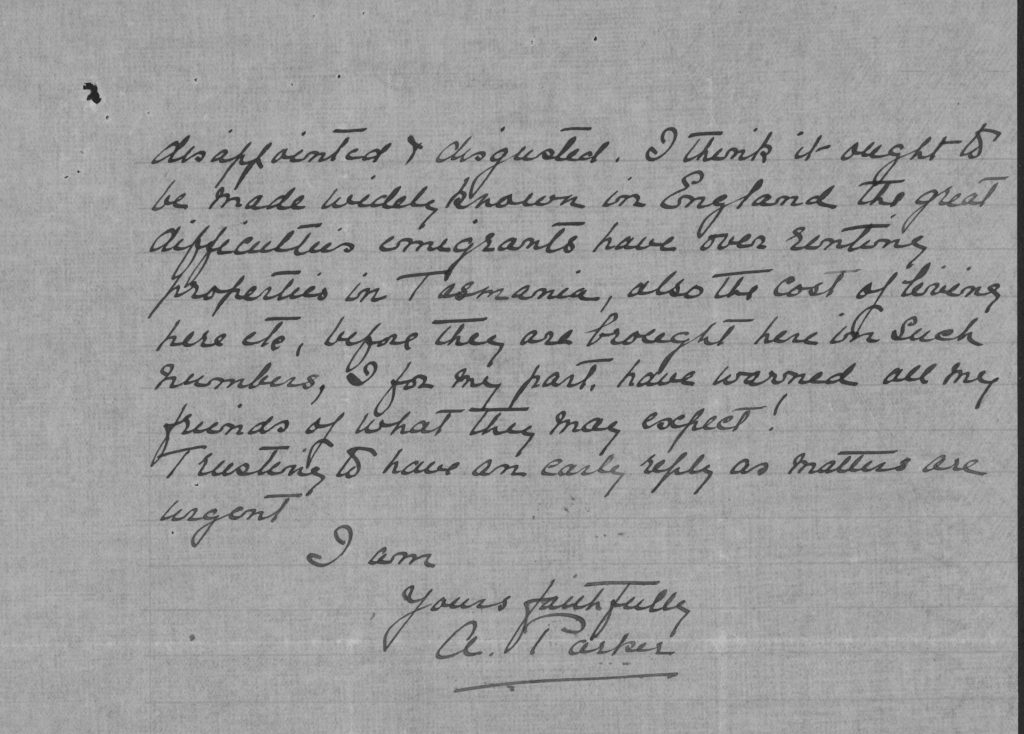
The Tasmanian who had nominated these two women for immigration was Mary’s mother and Agnes’ cousin, Mary Hicks. She had offered her relatives work at her farm in Spreyton.
On Hicks’ nomination, the Tasmanian government had agreed to pay part of the costs of passage from England.
When Mary and Agnes arrived, they found that Hicks wanted them to do her housework! They were not at all pleased. They were convinced that Hicks had lured them out under false pretences. She had encouraged them to try their hand at farming. Now they were being told to work as common domestics! And for their own mother/cousin! If that was what they had wanted, they could have stayed in Britain…or so Agnes complained to the Immigration Department.
She promptly turned us out of her house at a week’s notice, and we had to hunt about to find cheap rooms.
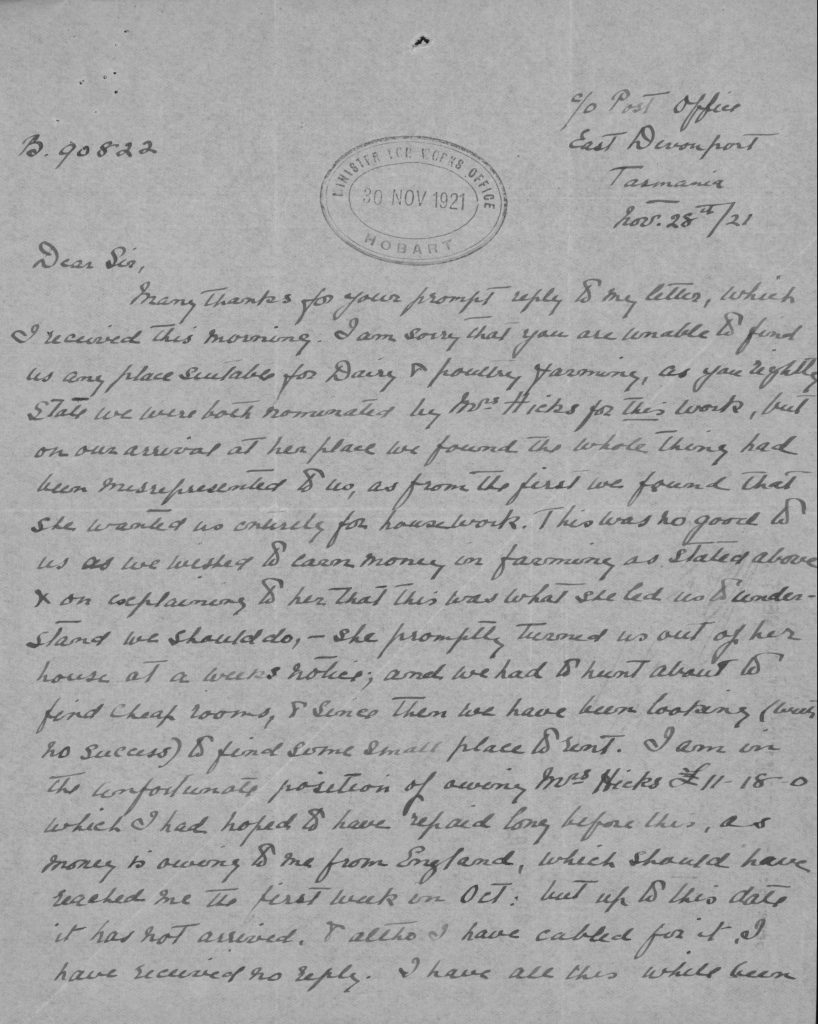

With nowhere to go, Mary and Agnes sought help from the Immigration Department, who referred their letter to the Department of Agriculture. Neither office knew what to do. The whole nomination scheme was set up to avoid the entry of immigrants who didn’t have any means of support.
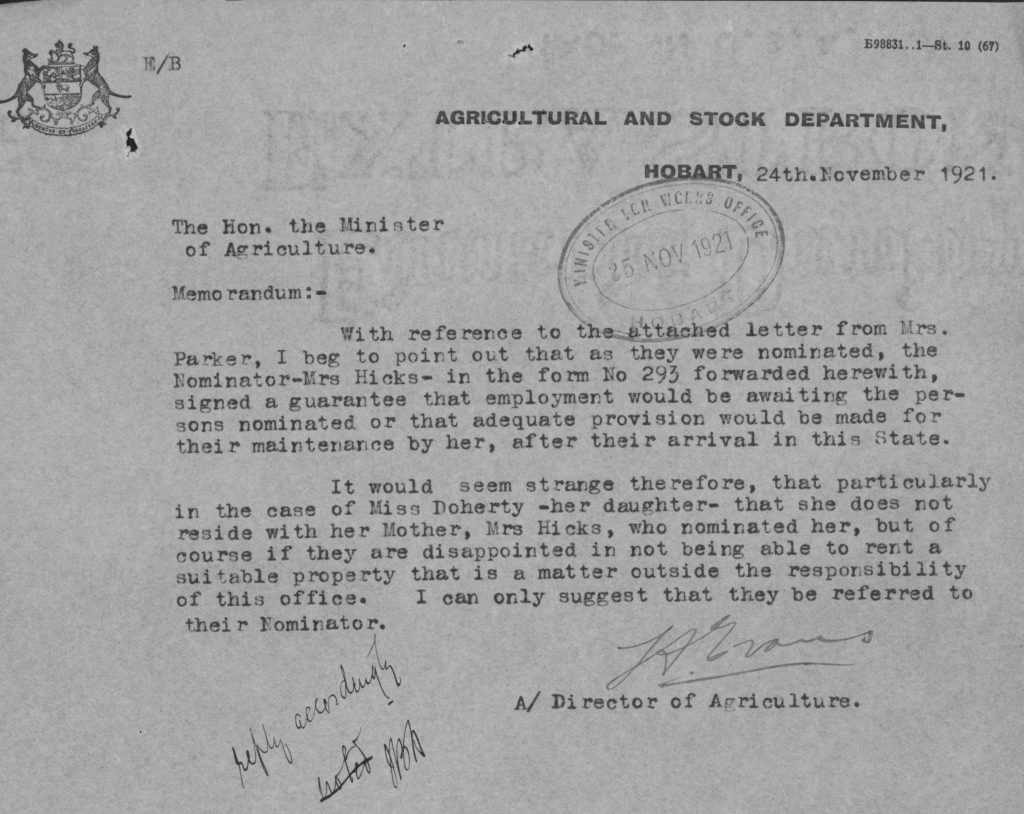
Time went on, and the women found themselves unable to find a farm to lease, ‘penniless’, and still in debt to their estranged relative. Mary and Agnes were convinced that the whole scheme was a ‘sham’, and more insistent that the government do something about their situation.
After the glowing terms in which Tasmania was painted for us at Australia House in London, and the ease with which (it was represented to us) we could rent a farm…we naturally feel that the whole story was a sham, and also that it is up to the immigration authorities to do something in the matter for us.
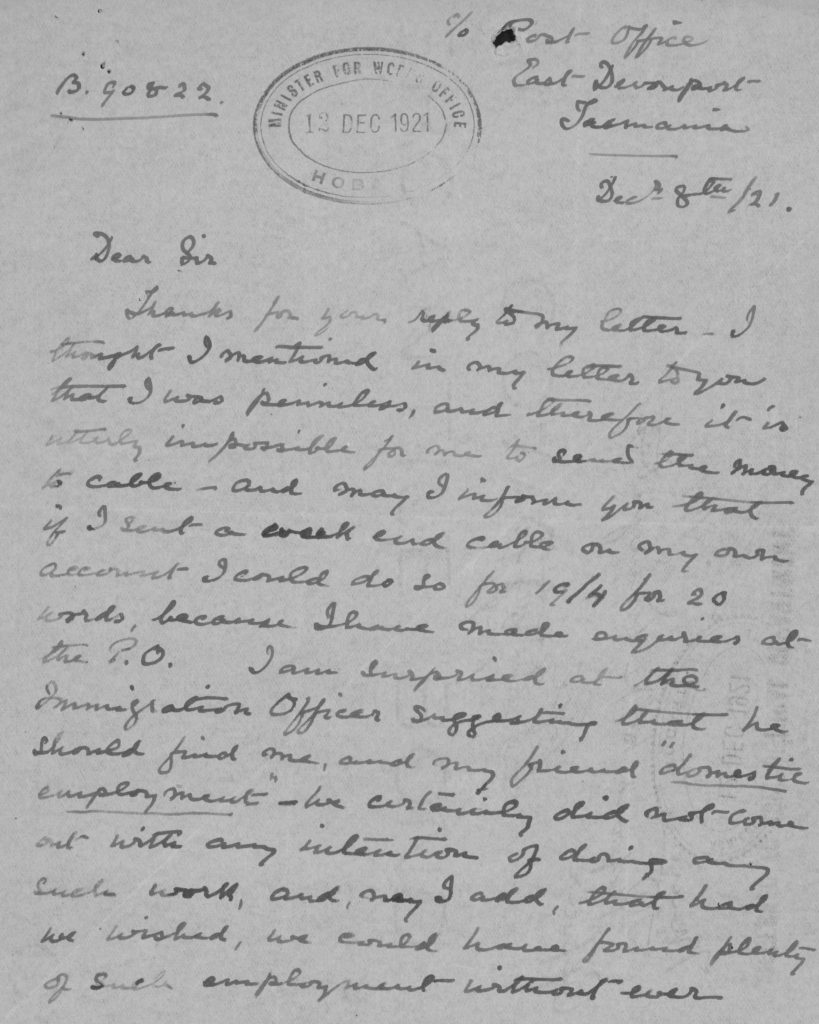
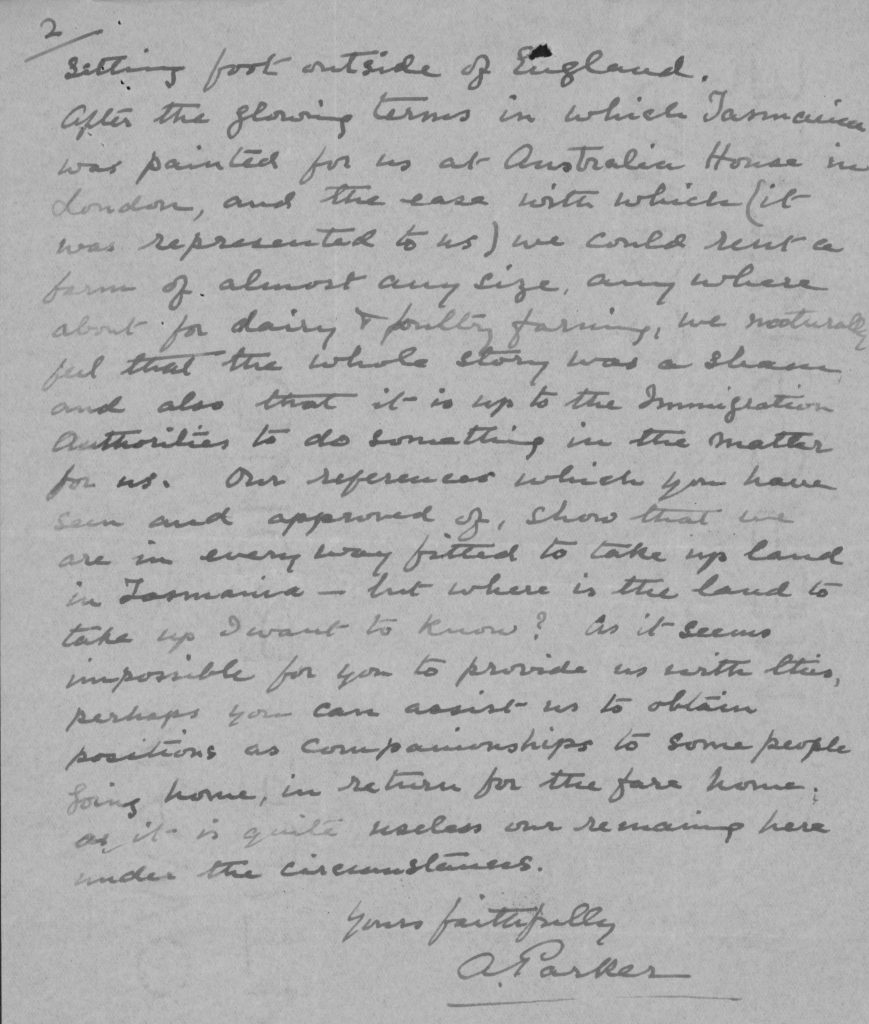
Finally, Mary and Agnes asked to be sent back to England.
And there, the file ends. We don’t know if they went back to England, or if they eventually found their way in this strange, new land.

